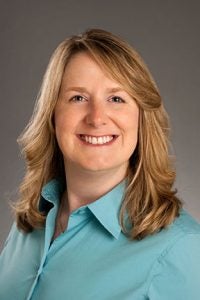
Karin Adams, assistant professor in the School of Allied Health Sciences’ Department of Community and Environmental Health, published “A Faceoff with Hazardous Noise: Noise Exposure and Hearing Threshold Shifts of Indoor Hockey Officials” with William J. Brazile, associate professor at Colorado State University, in the Journal of Occupational and Environmental Hygiene.
Noise exposure and hearing thresholds of indoor hockey officials of the Western States Hockey League were measured to assess the impact of hockey game noise on hearing sensitivity. Hockey officials have not been studied in this manner and Adams and Brazile’s research identifies this occupation as being at a higher risk of noise-induced hearing loss.
The Occupational Safety and Health Administration (OSHA) sets a noise exposure maximum level for workers. If an employee is exposed to an eight-hour time-weighted average of above the threshold limit, the employee must enroll in a hearing conservation program. OSHA-mandated hearing conservation programs include training on noise and hearing loss, annual hearing tests, hearing protection (such as earplugs or earmuffs) and noise monitoring.
Twenty-nine hockey officials who officiated the league in an arena in southeastern Wyoming in 2014 participated in the study. Adams and Brazile measured the noise levels to which each hockey official was exposed during a specific sampling time with personal noise dosimetry. Hearing thresholds were measured before and after hockey games to determine if and how much of a temporary threshold shift in hearing occurred. Adams and Brazile found significant threshold shifts between the pre- and post-game measurements in both ears for the participating hockey officials. This suggests that indoor hockey officials are exposed to hazardous levels of noise, experience temporary hearing loss after officiating games, and a hearing conservation program may be warranted. Further research has the potential to identify officials of other sporting events that are at an increased risk of noise-induced hearing loss.